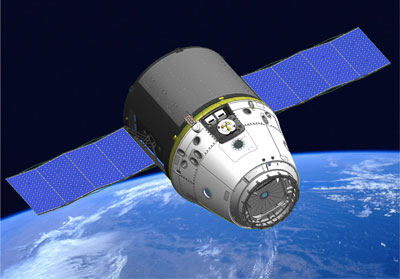COTS: the next generationby Taylor Dinerman
|
| One early choice that will be needed is for NASA to pick an overall strategic objective for the new COTS programs. |
This is a winner for everyone involved. The NewSpace firms get some financing for their projects and, perhaps more importantly, they get some idea of what one of their most important customers is interested in. After all, before Boeing and Airbus decide to begin work on a new airliner they ask the airlines lots and lots of questions. NASA is a government entity and its requirements are not exactly the same as those of a normal profit-seeking enterprise, but, like it or not NASA and the DoD will together determine the shape of the space industry’s market for a very long time to come.
One early choice that will be needed is for NASA to pick an overall strategic objective for the new COTS programs. Will they involve technology development, i.e. new materials and/or components, or will all-up systems be required, or will the new programs be goal-oriented? An example of the first objective might be to provide a new lightweight thermal protection system, for the second it might be a new spaceplane capable or reaching the ISS and returning to Earth by landing on a suitable runway, while the third might be exemplified by a program that would promise to purchase fuel from an orbital tank farm at a specified price.
The next generation of COTS could be designed to facilitate the movement of people and goods throughout the Earth-Moon system (cislunar space). If NASA was to choose this option the major contracts would only be signed sometime in the middle of the decade after next—say, 2024—after the proposed lunar outpost was established. In the meantime the agency and industry could concentrate on technology development and maturation.
This alternative would combine ambitious goals with a realistic time horizon. It would also lead to a process by which NASA’s classic exploration program would leave behind habitable spaces that could be occupied by either non-NASA governmental entities, such as the NSF, or by the private sector. Designating the ISS as a national laboratory was a small step in this direction.
One of the best things about COTS is that it is not simply NASA buying a new rocket, it is a move towards a fully commercial transportation infrastructure regulated by the FAA Office of Commercial Space Transportation. The implication is that in the future crew and cargo for NASA will share rides into space with others. This may be difficult for some in the agency to accept, but since they have learned to live with occasional visits from paying private space tourists, they can surely share capsule space with others, especially since the alternative is to continue to ride on the Soyuz.
The COTS D award is the key. Once the agency has crossed that Rubicon and accepted that there is a role for commercial human transportation, it will be easier for NASA to concentrate its efforts first on the Moon and then on Mars. The ISS and its operations will still play a part in the agency’s program but it will no longer dominate it the way it has for the last 20 years.
The new administration will want to put its own stamp on space policy. Using the COTS process to establish a different relationship between NASA and the commercial space industry, particularly the NewSpace firms, will be a change that everyone can recognize and probably applaud.
| NASA, like any government agency, or like an obstinate horse, will only change direction if it is convinced that the will of the rider or the administrator is stronger than its will to keep doing the same thing. |
Getting the strategy right will take both thought and leadership. The policy development process need not take too long—six months at most—but it should be thorough. There is no time for a blue-ribbon commission to be set up, hold hearings, and to write a report. What is needed is a small team of experienced men and women who understand the industry and whose views are closely aligned with NASA leadership.
Getting this right will also take leadership and that may be the hardest part of all. NASA, like any government agency, or like an obstinate horse, will only change direction if it is convinced that the will of the rider or the administrator is stronger than its will to keep doing the same thing. Naturally, once the change is made, a bureaucracy, like horse, convinces itself that it wanted to go that way all along.
